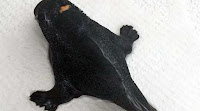Reggae Artiste Black Uhuru Biography

Reggae Artiste Black Uhuru Biography by InfosysTV The most successful of the second-generation reggae bands, Black Uhuru maintained their high quality despite numerous personnel changes in their 40-plus-year history. The first reggae band to win a Grammy award, for their 1983 album Anthem, Black Uhuru was called "The most dynamic and progressive reggae act of the 1970s and early '80s." The band, whose name comes from the Swahili word meaning "freedom," was formed in the Waterhouse district of Kingston by Don Carlos, Rudolph "Garth" Dennis, and Derrick "Duckie" Simpson. When the group experienced difficulties securing a record contract, Spencer left to pursue a solo career and Dennis joined the Wailing Souls. Simpson, who remained the thread throughout Black Uhuru's evolution, reorganized the band with Errol "Jay" Wilson and quivery-voiced lead vocalist Michael Rose. Accompanied by the rhythm section of Sly Dunbar on




Comments
Post a Comment